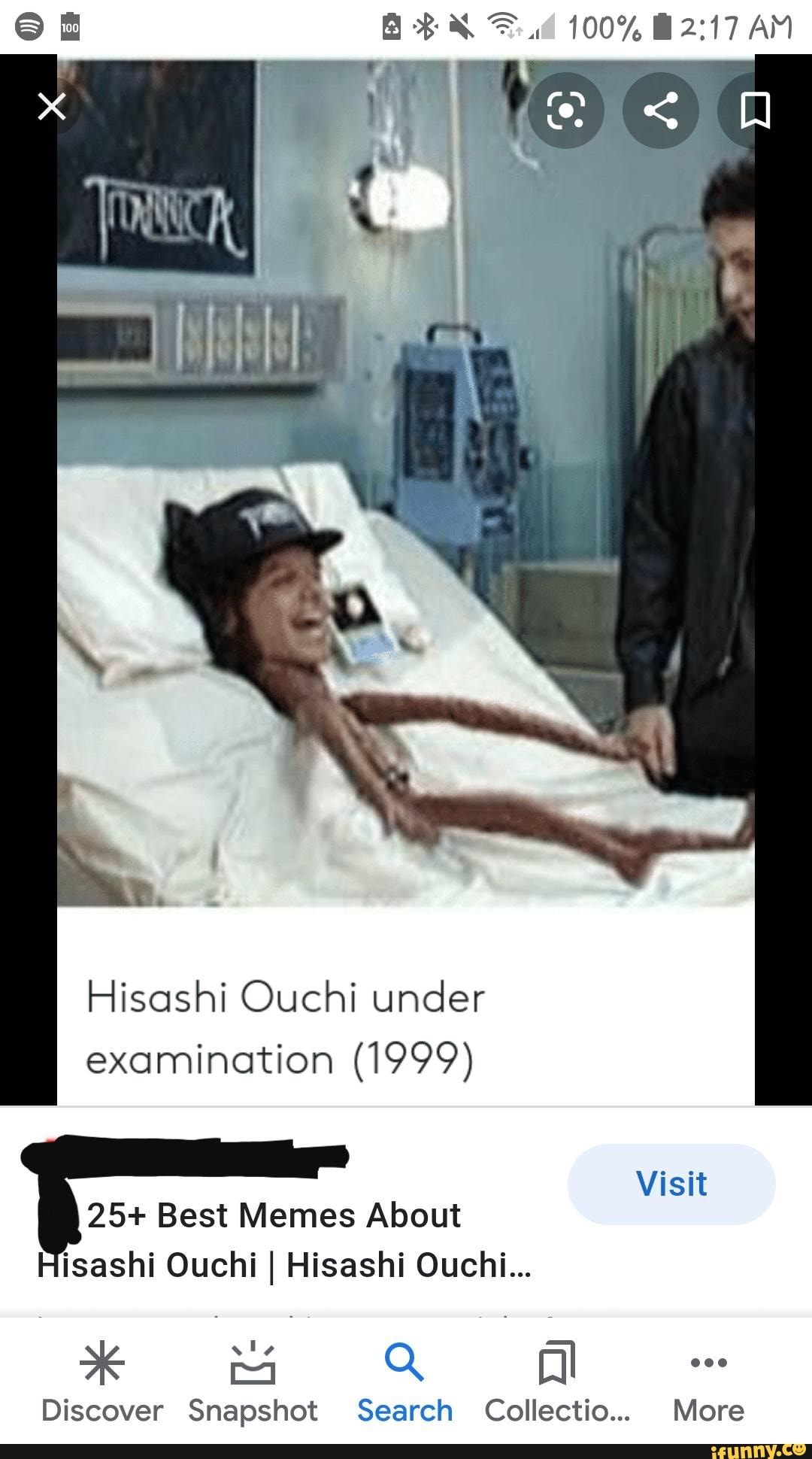

Exploring Hisashi Ouchi's Skin: A Tragic Tale Of Radiation Exposure
Hisashi Ouchi's skin stands as a haunting reminder of the dangers of radiation exposure, a subject that resonates deeply within the context of nuclear safety and health. The story of Hisashi Ouchi is not just about a man who suffered immensely due to a catastrophic accident but also serves as a crucial case study in the field of radiobiology. His life and the subsequent medical challenges he faced provide vital insights into the effects of radiation on human health, particularly on the skin, which is the first barrier against environmental hazards.
In this article, we will delve into the life of Hisashi Ouchi, examining the events leading to his tragic exposure to radiation, the medical implications on his skin, and the broader lessons learned from this incident. The keyword "Hisashi Ouchi skin" will guide our exploration of the physical and emotional ramifications of his experience, shedding light on the importance of safety measures in nuclear facilities.
Through this deep dive, we aim to honor Hisashi Ouchi's memory while educating readers about the vital intersections of health, safety, and the human body’s resilience. This article will serve as a comprehensive resource for anyone seeking to understand the complexities surrounding radiation exposure and its lasting impacts.
Table of Contents
- Biography of Hisashi Ouchi
- Understanding Radiation Exposure
- Medical Implications on Skin
- Case Study: Hisashi Ouchi
- Public Awareness and Radiation Safety
- Lessons Learned from Hisashi Ouchi's Incident
- Conclusion
- Sources
Biography of Hisashi Ouchi
Hisashi Ouchi was born on March 24, 1964, in Japan. He became a nuclear technician and was known for his dedication to his work within the Tokaimura nuclear facility. Unfortunately, on September 30, 1999, Ouchi became a victim of a severe nuclear accident when an uncontrolled nuclear reaction occurred due to improper handling of uranium. This incident would change his life forever.
| Personal Information | Details |
|---|---|
| Name | Hisashi Ouchi |
| Date of Birth | March 24, 1964 |
| Profession | Nuclear Technician |
| Accident Date | September 30, 1999 |
| Location | Tokaimura Nuclear Facility, Japan |
Understanding Radiation Exposure
Radiation exposure can occur from various sources, including medical procedures, environmental factors, and nuclear accidents. In Ouchi's case, he was subjected to a criticality accident, which is a rapid release of energy due to a chain reaction of fissile material. The following points summarize the nature of radiation exposure:
- Types of radiation: alpha, beta, gamma, and neutron radiation.
- Effects of radiation on human health, particularly skin damage.
- Measurement units: Sieverts (Sv) and Grays (Gy).
The severity of the impact of radiation depends on various factors, including the dose received, the duration of exposure, and the type of radiation involved.
Medical Implications on Skin
The skin is the body's first line of defense against environmental threats, and it is also the most visibly affected by radiation exposure. Some of the medical implications that Hisashi Ouchi faced include:
- Acute Radiation Syndrome (ARS): A condition that arises from high doses of radiation, leading to various systemic symptoms.
- Skin burns and lesions: Immediate and long-term effects of radiation exposure on the skin.
- Increased cancer risk: A significant concern for survivors of radiation exposure.
In Ouchi's case, the extensive damage to his skin was a direct result of the high levels of radiation he absorbed during the accident. His treatment involved complex medical interventions, including skin grafts and intensive care.
Case Study: Hisashi Ouchi
Hisashi Ouchi's case is a pivotal example of the consequences of radiation exposure. Following the accident, he suffered from severe skin damage, which required extensive medical treatment. Despite efforts to save him, Ouchi's condition deteriorated rapidly, leading to his death on December 21, 1999, after enduring a harrowing two months of suffering.
This case highlights several critical aspects:
- The importance of safety protocols in nuclear facilities.
- The need for rapid response and medical care in radiation accidents.
- The psychological impact on the victims and their families.
Public Awareness and Radiation Safety
Hisashi Ouchi's story has contributed to a growing awareness of the dangers of radiation and the importance of safety measures in the nuclear industry. Public awareness campaigns are crucial in educating individuals about the risks associated with radiation exposure and promoting safety practices. Some key points include:
- Understanding the risks associated with nuclear energy.
- Advocating for stringent safety regulations in nuclear facilities.
- Promoting research on the long-term effects of radiation exposure.
Lessons Learned from Hisashi Ouchi's Incident
The tragic accident that befell Hisashi Ouchi serves as a critical lesson for the nuclear industry and society at large. Key takeaways include:
- The necessity of rigorous training and adherence to safety protocols.
- Immediate access to medical care and support for radiation victims.
- The importance of transparent communication with the public regarding nuclear safety.
Conclusion
Hisashi Ouchi's skin and the suffering he endured are stark reminders of the potential dangers associated with radiation exposure. His case underscores the urgent need for safety in nuclear facilities and the importance of public awareness regarding radiation risks. By learning from his story, we can better protect individuals from similar tragedies in the future.
We encourage readers to engage with this important topic by leaving comments, sharing this article, or exploring further readings on radiation safety and health implications.
Sources
1. National Cancer Institute. "Radiation and Cancer." Link
2. World Health Organization. "Health Effects of Radiation." Link
3. U.S. Nuclear Regulatory Commission. "Understanding Radiation." Link
Shyna Khatri's New Series Name: Everything You Need To Know
Is Jennifer Garner Related To James Garner? Exploring The Connection Between Two Hollywood Stars
If Religion: Understanding Its Impact On Society And Individual Lives


